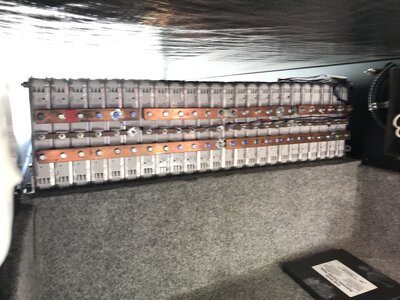- Joined
- Jan 19, 2021
- Messages
- 3,614
- Location
- Rosemary Farm
- RV Model
- Between RVs
- TOW/TOAD
- Toadless
- Fulltimer
- No
Plugged into shore power yes; into a wall outlet no. Your wall outlets are on 15amp circuits with 14ga wire so putting a bigger load on that type of circuit would be a mistake, and probably (hopefully) just trip the breaker anyway, regardless of what the guy at Thor said. I am not certain as I‘ve never tried to over-power a breaker by feeding excessive power backwards through it (might be a good experiment on someone else's panel) but it just sounds all wrong.Finally got through to the THOR Motor Coach support electrician. He sent the attached electrical diagrams for my 2021 Thor Compass. A better picture to assist us. He also stated no issue plugging the power station into the wall outlet or shore power cable, but need to make sure the power station is capable of delivering 30amps. Also, there is a battery disconnect switch which allows the batteries not to be charged by shore power and only charged by the two solar panels.
When I have back-fed a panel for a hillbilly generator hook-up, I’ve at least gone straight to the panel with an appropriately sized circuit (home run with the right size wire and outlet) and made sure no one else touched it. Can’t say I’ve never done the double male thing, but it is asking for trouble and with an RV (to me) its just not worth the risk. Seems pretty irresponsible for a tech at Thor to advocate this.













